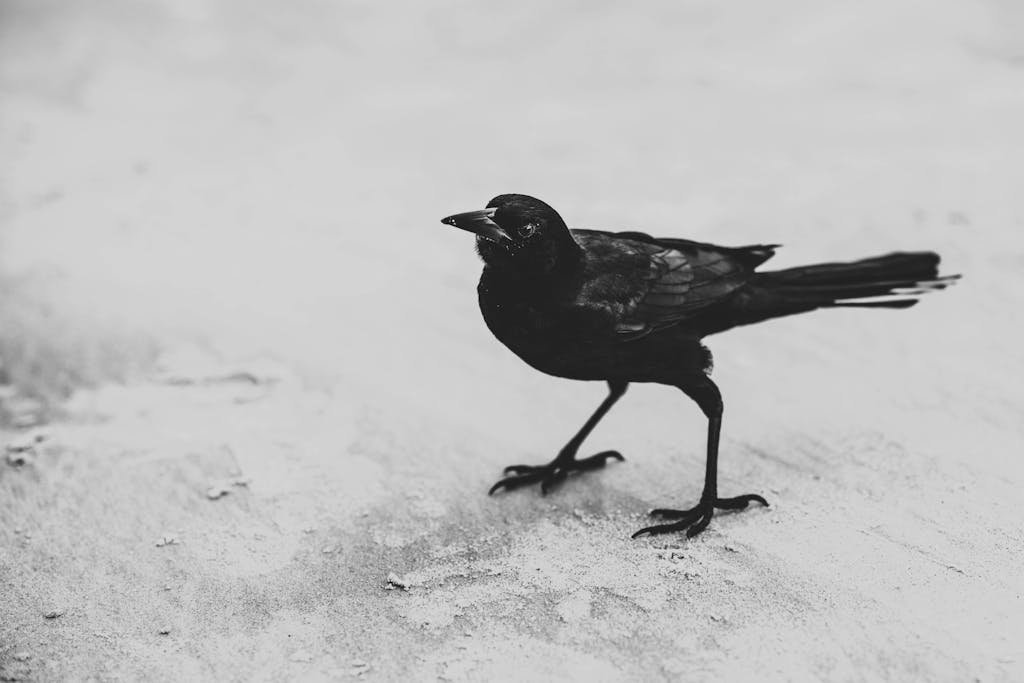
Encountering a raven while hiking can transform a simple nature walk into an engaging wildlife observation experience. Renowned for their intelligence and mystical presence, ravens are a fascinating subject for photographers and nature lovers alike. This article delves deeper into the world of ravens, offering expert tips on how to interact with these cunning birds, what to avoid to ensure a respectful encounter, and how to best capture their majesty on camera.
Understanding Ravens: Behavior, Diet, and Social Dynamics
Ravens are not only omnivores but also opportunistic feeders, which means their diet is incredibly varied. They consume insects, seeds, waste, and small animals, and are known to scavenge on carrion left by larger predators. Observing ravens in their natural foraging behaviors provides a fascinating glimpse into their ability to adapt and thrive in various environments—from remote wilderness to populated hiking trails.
Socially, ravens are intriguing. They can be observed in pairs or in large groups, and their social interactions include complex communication forms and playful antics, especially in juvenile birds. During the breeding season, ravens are particularly territorial and may be seen defending their nests vigorously, which is a spectacle in itself.
Do’s and Don’ts When Encountering Ravens on the Trail
When encountering ravens on your hikes, it’s essential to interact responsibly to protect both yourself and the wildlife. These intelligent birds are curious by nature and might approach hikers, but respecting their space and natural behaviors is crucial.
Do’s
- Observe Quietly: Ravens are naturally cautious, and loud noises can startle them. Stay silent and use binoculars or a zoom lens to observe their behavior without intrusion.
- Respect Their Space: Maintain a safe distance of at least 50 feet to avoid disturbing the birds, especially during the breeding season when they can be highly territorial.
- Learn to Identify Their Behavior: Ravens communicate with a variety of calls and gestures. Observing these behaviors can enhance your understanding and appreciation of their social structures.
- Document Responsibly: If taking photographs, use a telephoto lens to capture their details without approaching too closely. The less invasive your presence, the better for the ravens.
- Pack Out Trash: Ravens are opportunistic feeders and may scavenge improperly disposed waste. Ensure you leave no trace to keep them safe and discourage dependency on human food.
Don’ts
- Do Not Feed: Feeding wildlife, including ravens, disrupts their natural foraging habits and can lead to dependency on humans. This increases their vulnerability to predators and environmental changes.
- Avoid Sudden Movements: Quick or unexpected actions can scare ravens, potentially causing aggressive defensive behaviors, especially near their nests.
- Do Not Approach Nests: Ravens are highly protective of their young and can become aggressive if they perceive a threat. Stay far away from nesting areas.
- Refrain from Mimicking Calls: While it might be tempting to mimic their sounds, this can confuse or agitate them and alter their natural behavior.
- Never Handle or Chase: Attempting to handle or chase a raven can result in injury to the bird and is highly stressful for them.
Safety Tips When Encountering Ravens
Ravens are generally not dangerous to humans, but respecting their space and behaviors ensures both your safety and theirs. Here are specific safety measures to keep in mind:
- Stay Aware of Surroundings: Ravens are often found in diverse habitats, from forested trails to cliff edges. Be mindful of your footing and avoid areas with loose rocks or steep drop-offs while watching them.
- Avoid Direct Eye Contact: Prolonged eye contact may be perceived as a threat, especially by territorial birds.
- Be Cautious Around Flocks: While individual ravens are usually not aggressive, large groups can become defensive if they feel threatened.
- Use Proper Gear: Carry essentials such as binoculars or a zoom lens to observe ravens from a safe distance.
- Check Local Guidelines: In some areas, interactions with wildlife, including feeding or photographing near nests, may be restricted to protect the animals.
How to Stay Safe While Hiking in Raven Habitats
When hiking in areas populated by ravens, general hiking safety applies as well:
- Pack Emergency Supplies: Always carry water, a first aid kit, and navigation tools in case you get lost or encounter unexpected challenges.
- Know Your Surroundings: Familiarize yourself with the area and understand the behaviors of other wildlife that may inhabit the same environment as ravens, such as larger predators or scavengers.
- Hike in Groups: If you’re concerned about safety, hiking with a group can help mitigate risks from both wildlife and terrain challenges.
- Protect Your Belongings: Ravens are known for their curiosity and may attempt to explore your belongings. Secure your backpack and food to avoid attracting them.
- Be Weather Prepared: Raven habitats can vary from high-altitude cliffs to dense forests, so ensure you’re equipped for sudden weather changes, including rain or wind.
John Muir: “The mountains are calling, and I must go, and I will work on while I can, studying incessantly.”

Advanced Photography Tips for Capturing Ravens
Photographing ravens requires patience and the right equipment. Here are some tips to help you get the best shots:
- Camera Gear: A DSLR or mirrorless camera with a telephoto lens (200mm or greater) is ideal for capturing clear, detailed images of ravens without disturbing them.
- Best Times for Photography: Shoot during the golden hours (early morning or late afternoon) when the light is soft and warm, enhancing the mystical aspect of ravens.
- Settings Advice: Use a fast shutter speed to freeze motion, a narrow aperture to keep the bird in focus, and adjust the ISO according to the lighting conditions.
Edward Abbey: “If you watch how nature deals with adversity, continually renewing itself, you can’t help but learn.”
Recommended Gear for Hiking and Bird Watching
- Nikon Monarch Binoculars: High-resolution binoculars that provide clear, close-up views of wildlife from a distance.
- Canon EOS R5: A high-performance camera that offers incredible image quality and a robust autofocus system, perfect for capturing wildlife.
- Portable Wildlife Feeder: Set up a feeder in designated areas (check local guidelines) to observe and photograph birds safely without impacting their natural feeding patterns.
Conclusion
Ravens add a layer of depth and intrigue to any outdoor adventure, embodying the wild spirit of the places they inhabit. By observing and photographing ravens responsibly, hikers can enjoy a richer, more connected experience with nature. Remember to follow the guidelines for wildlife interaction and use recommended photography gear to enhance your observations and contribute positively to the conservation of these intelligent creatures.
By enriching the content with more details, practical tips, and recommended products, this article is not only a guide but also an engaging resource for hiking enthusiasts who are keen to explore nature photography and birdwatching.
References and Resources
To further explore the fascinating world of ravens and contribute to their preservation, here are some valuable resources and references:
- Audubon Society
- A leading organization dedicated to the protection of birds and their habitats. The Audubon Society offers extensive information on bird species, including ravens, and guides on how to observe and protect them.
- Visit Audubon Society
- Cornell Lab of Ornithology
- Home to extensive research on birds and biodiversity, the Cornell Lab of Ornithology provides detailed bird guides, including audio of calls and songs, which can enhance any bird-watching experience.
- Explore Cornell Lab of Ornithology
- National Parks Service (NPS)
- Offers guidelines on wildlife watching and nature photography ethics, particularly useful for visitors to national parks where ravens are often sighted.
- National Parks Service – Wildlife Watching Tips
- Nature Conservancy
- A global environmental nonprofit working to protect ecologically important lands and waters for nature and people. The Nature Conservancy provides resources on how you can participate in local conservation efforts.
- Visit Nature Conservancy
- BirdLife International
- An organization leading efforts to preserve avian habitats across the globe. Their website includes updates on bird conservation status and practical ways to help.
- BirdLife International
- eBird
- A project of the Cornell Lab of Ornithology, eBird provides a massive database of bird sightings contributed by amateur and professional birdwatchers. Useful for tracking raven populations and their behaviors.
- Contribute to eBird
- International Bird Rescue
- Specializes in the rescue and rehabilitation of injured birds. Their site offers insights into the challenges birds face and how you can help.
- International Bird Rescue






